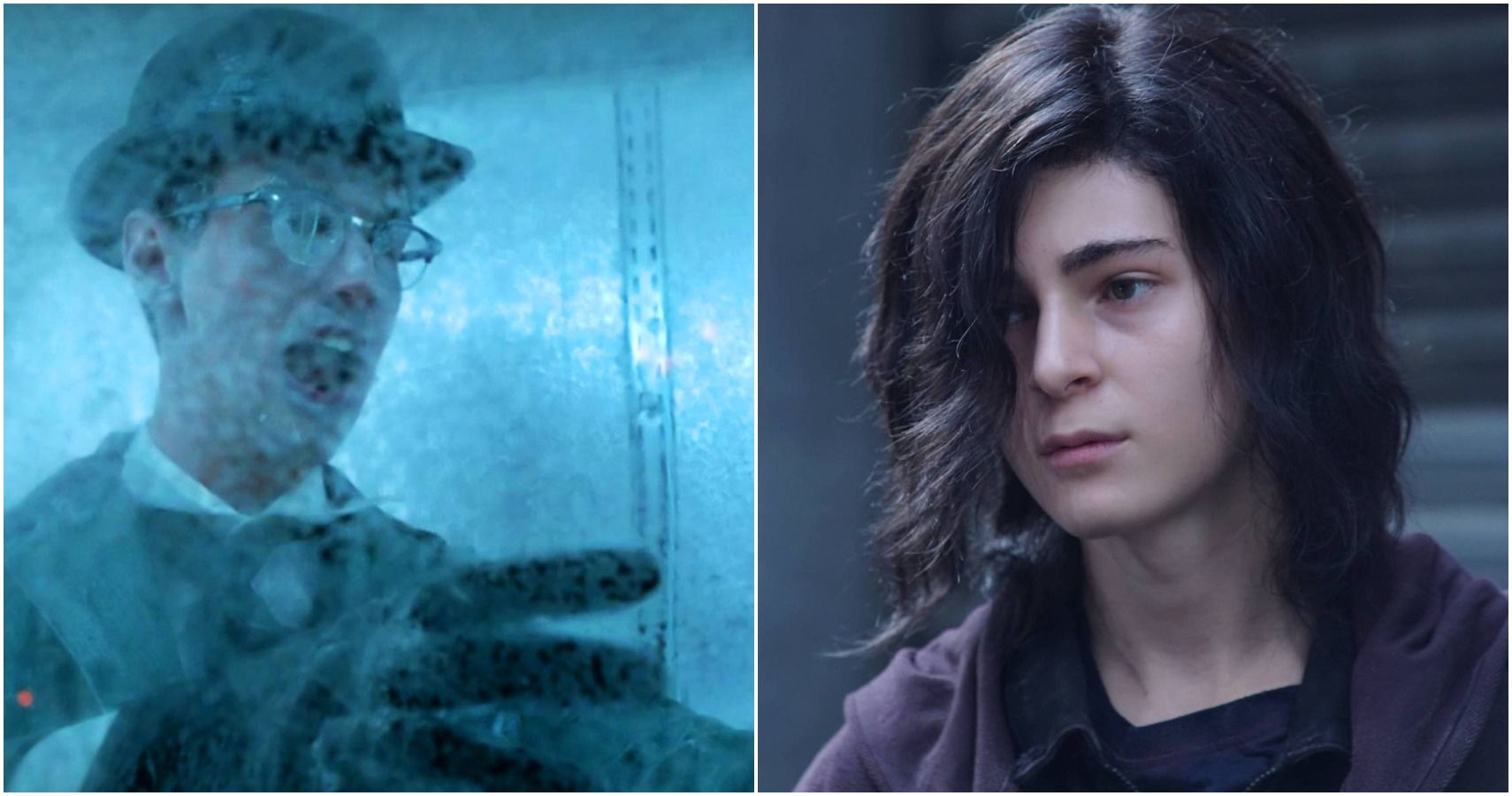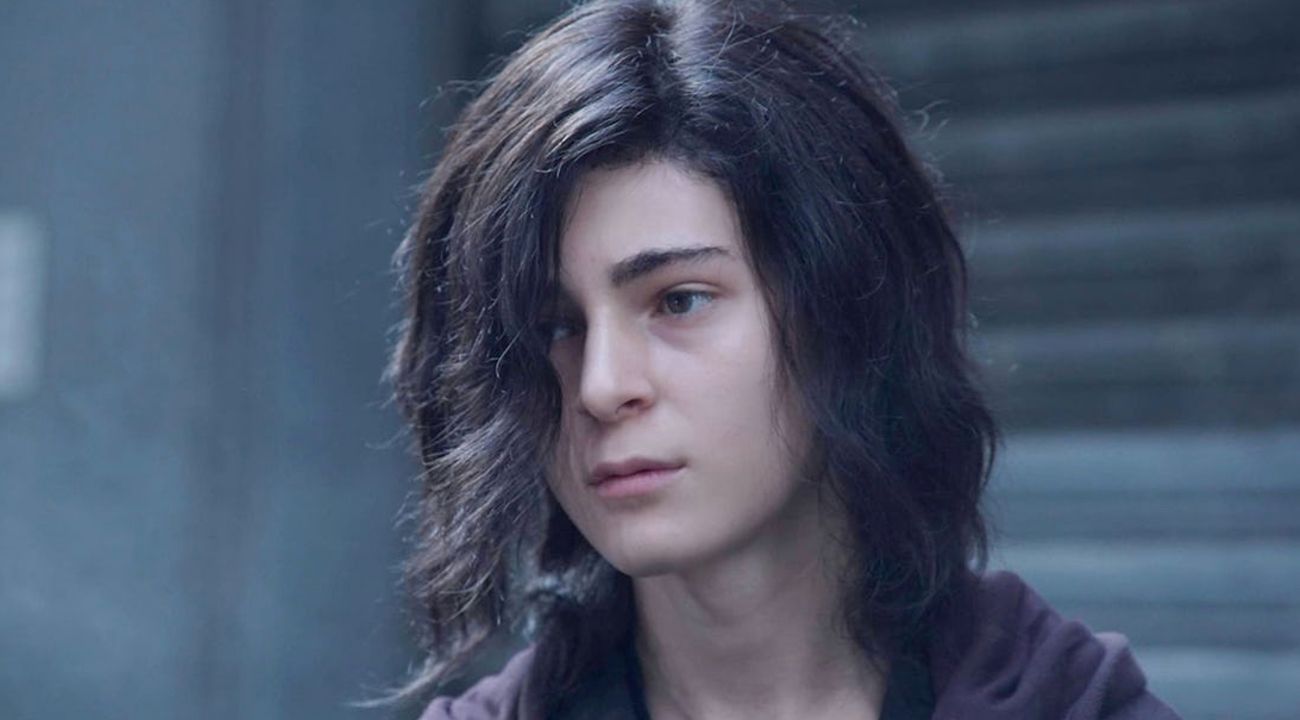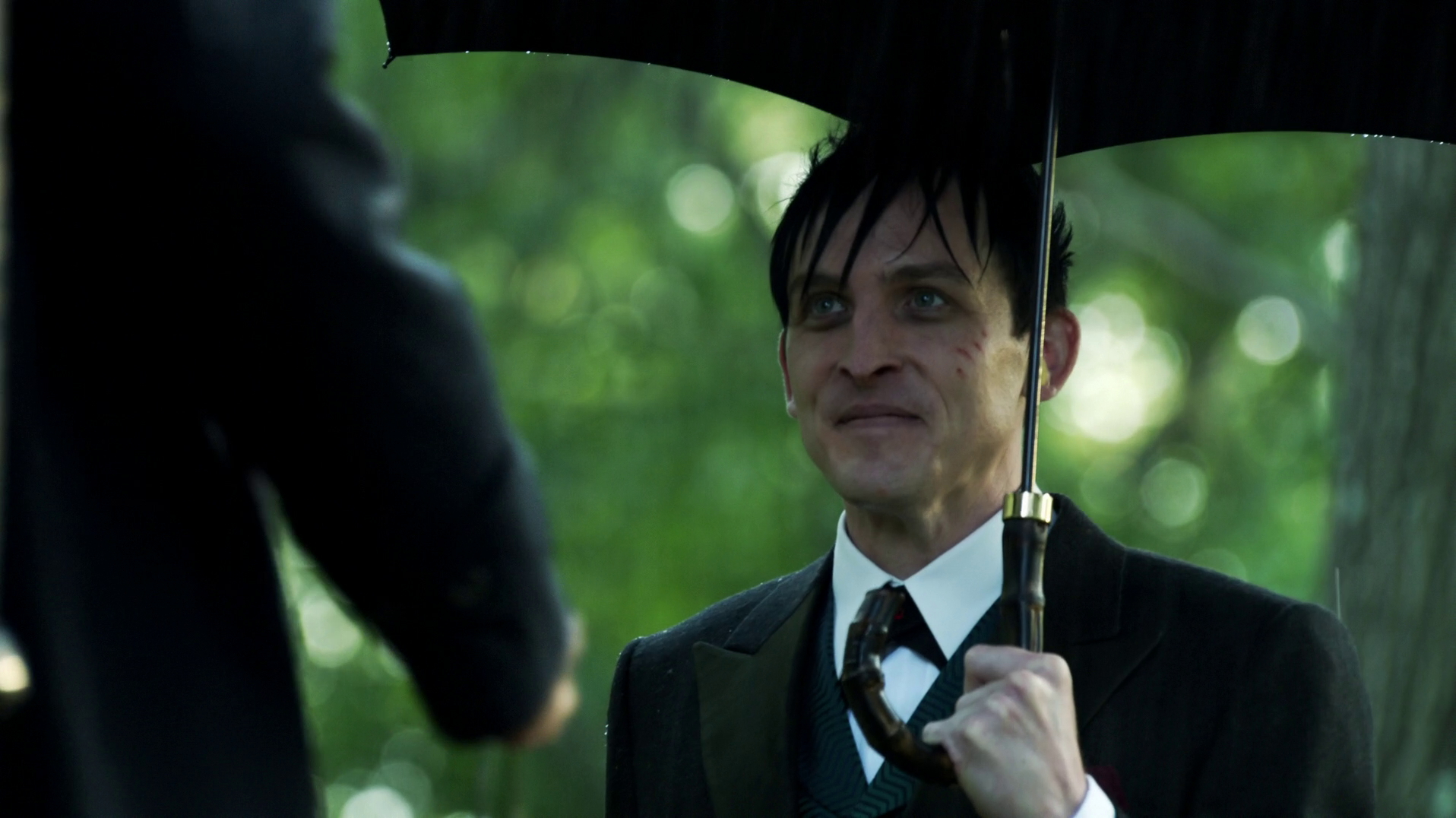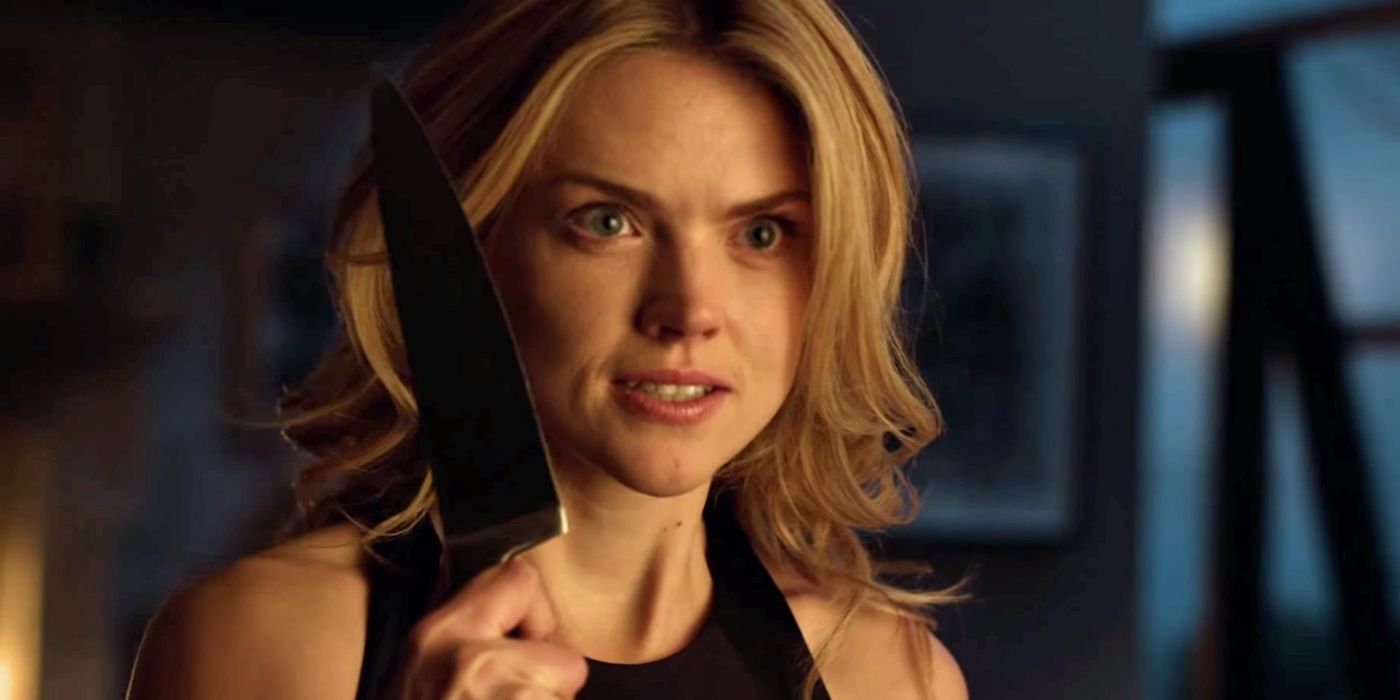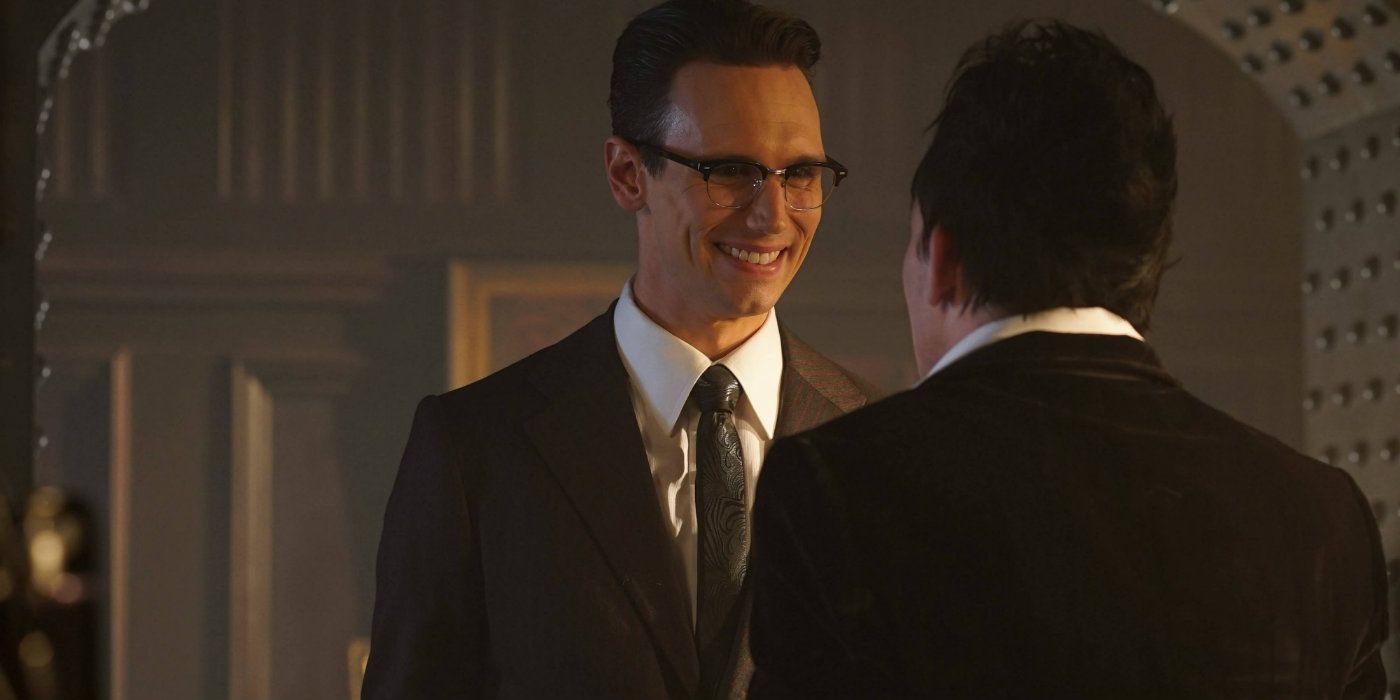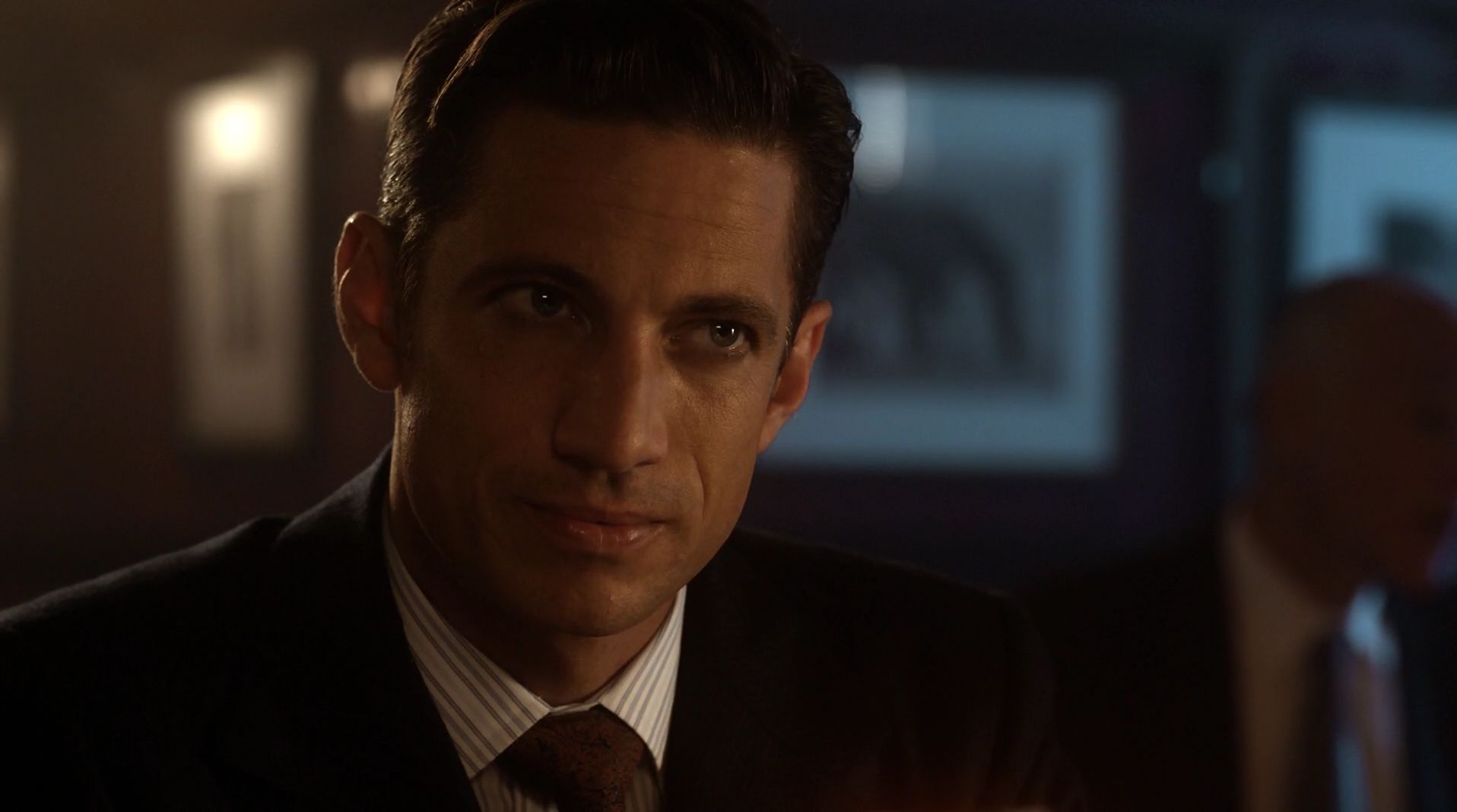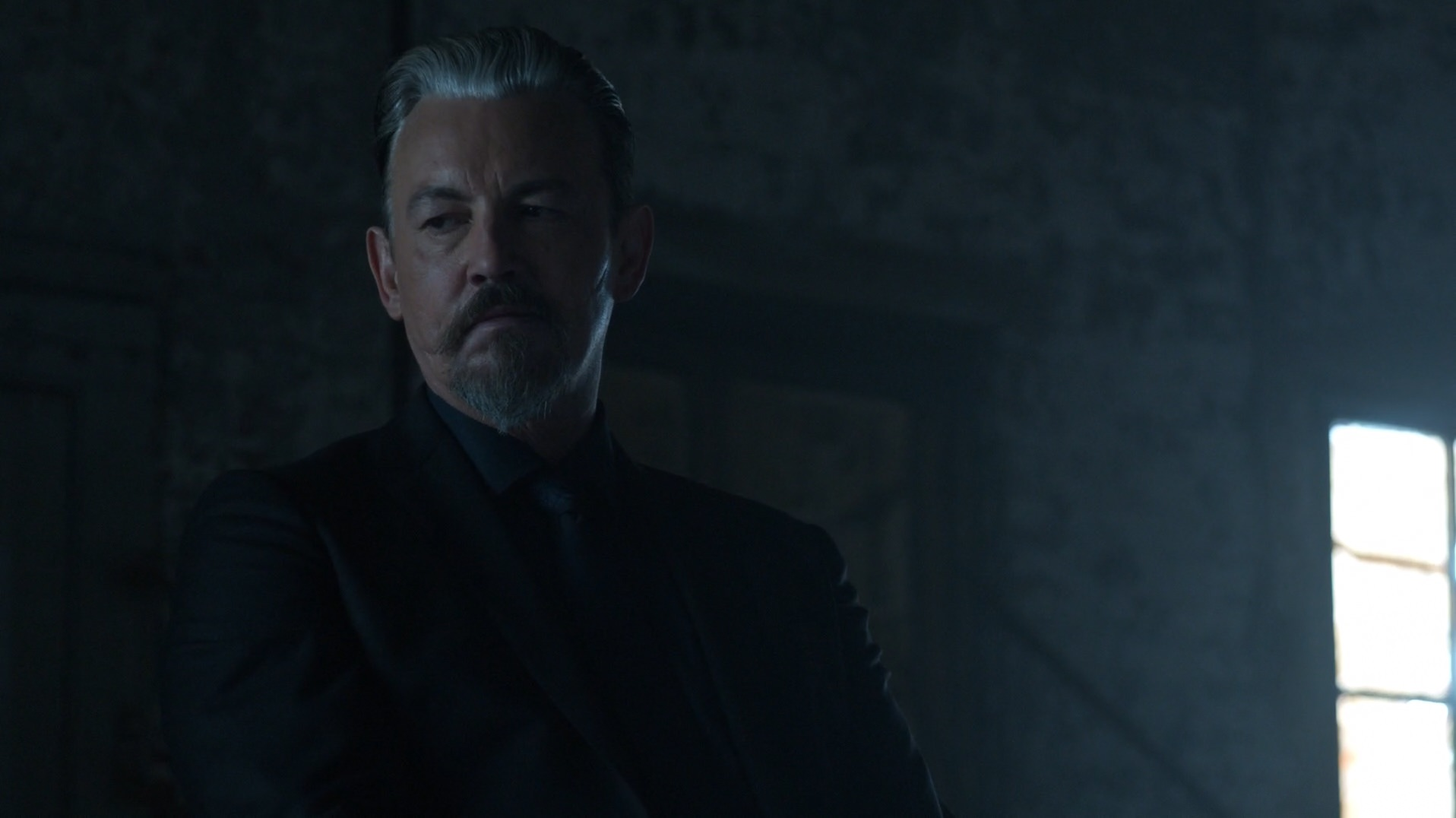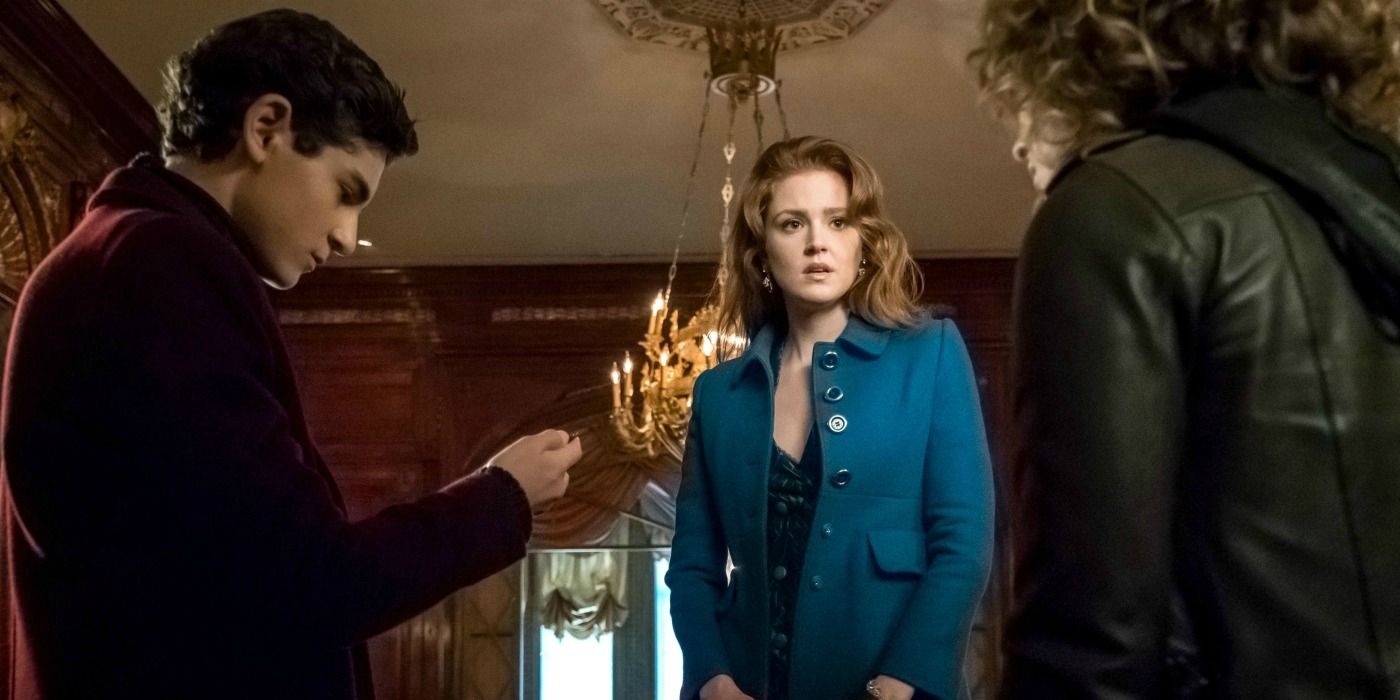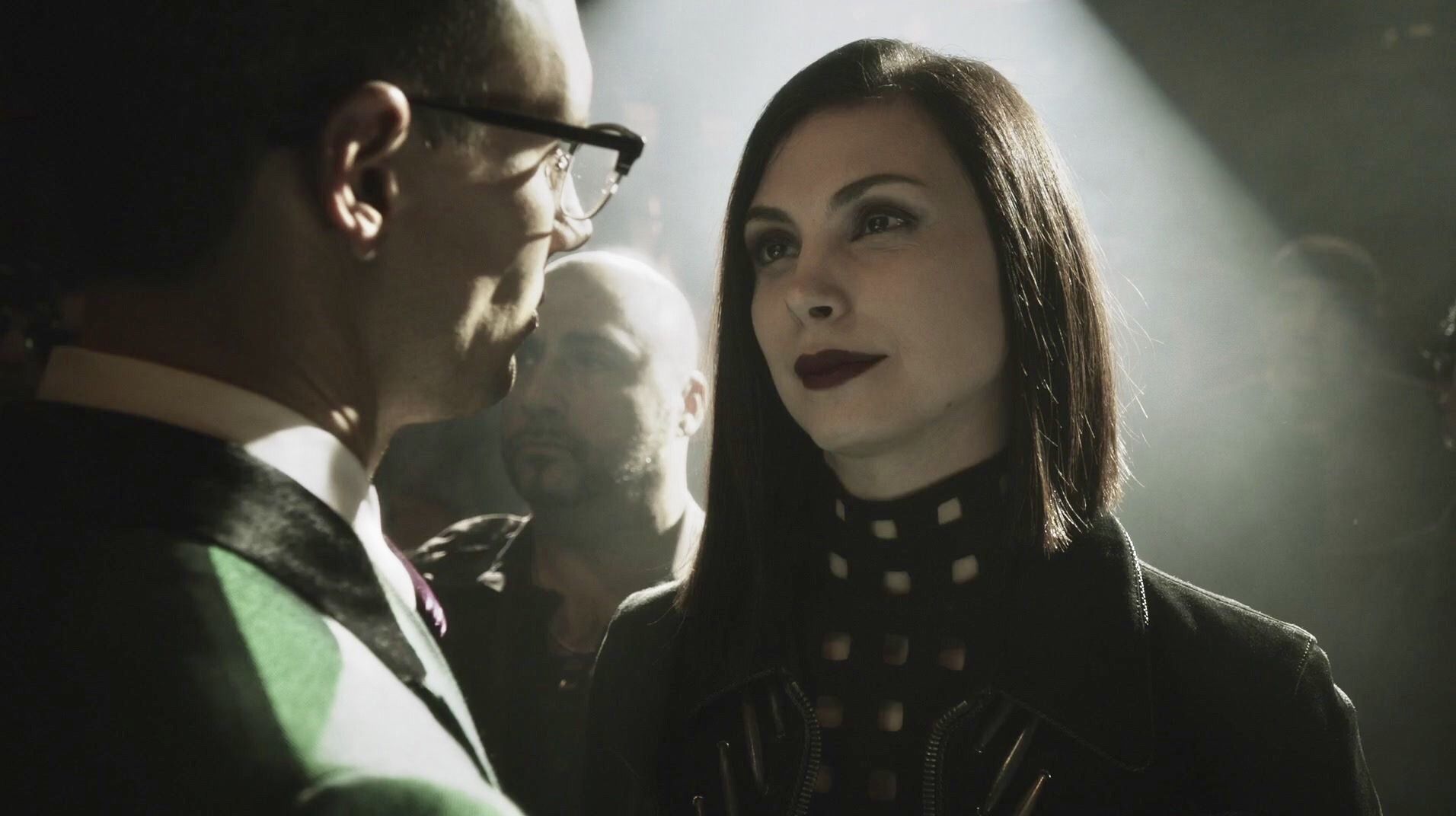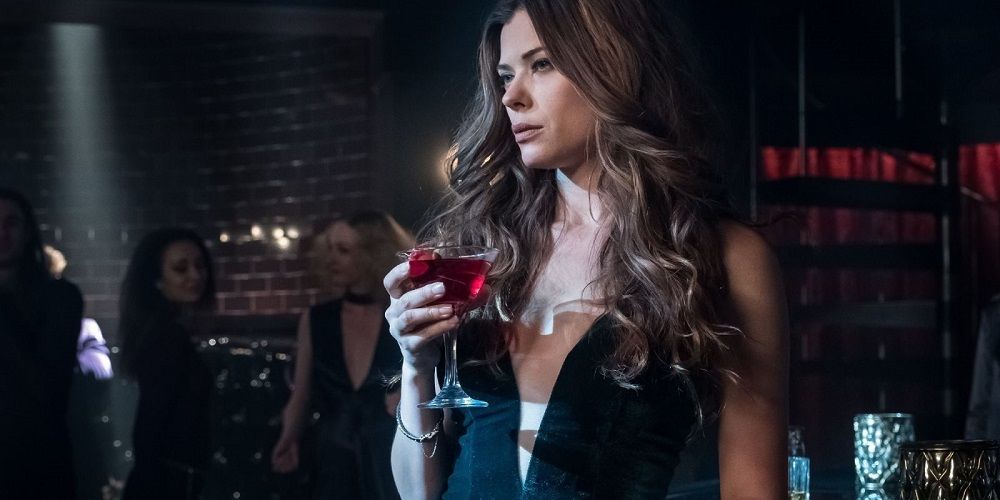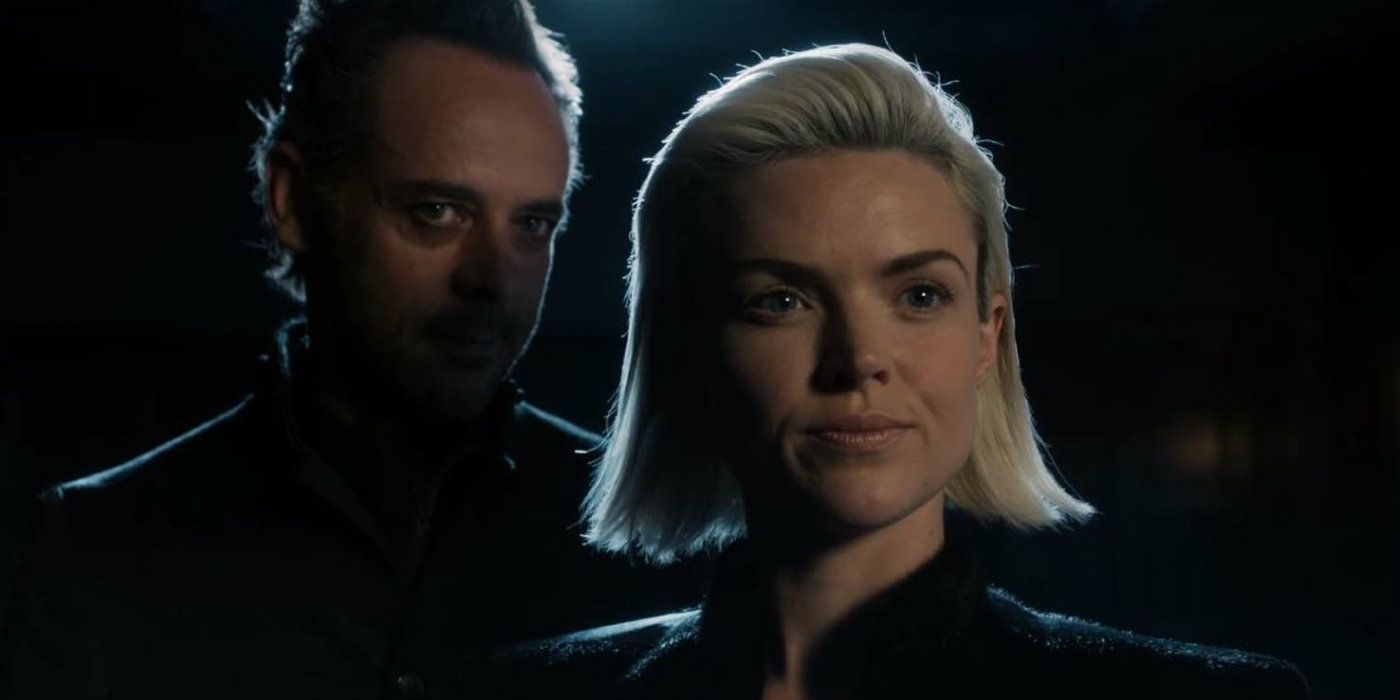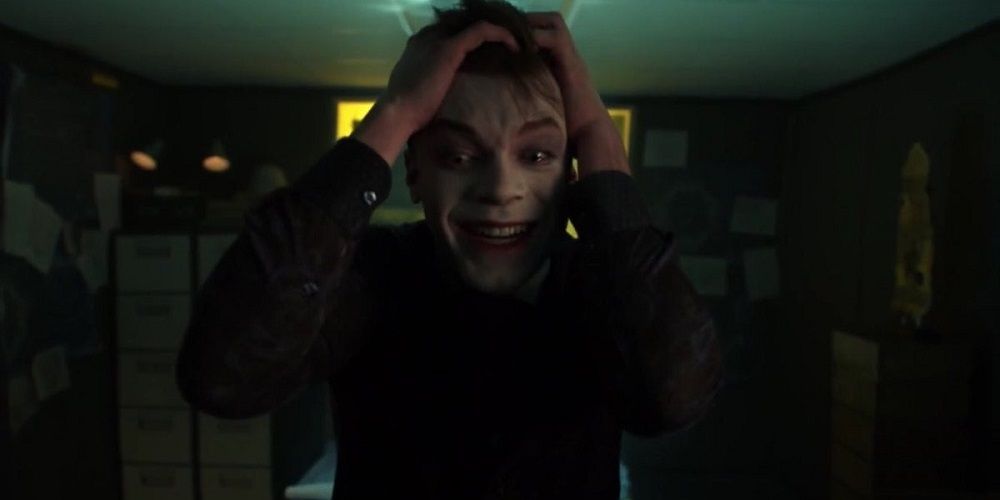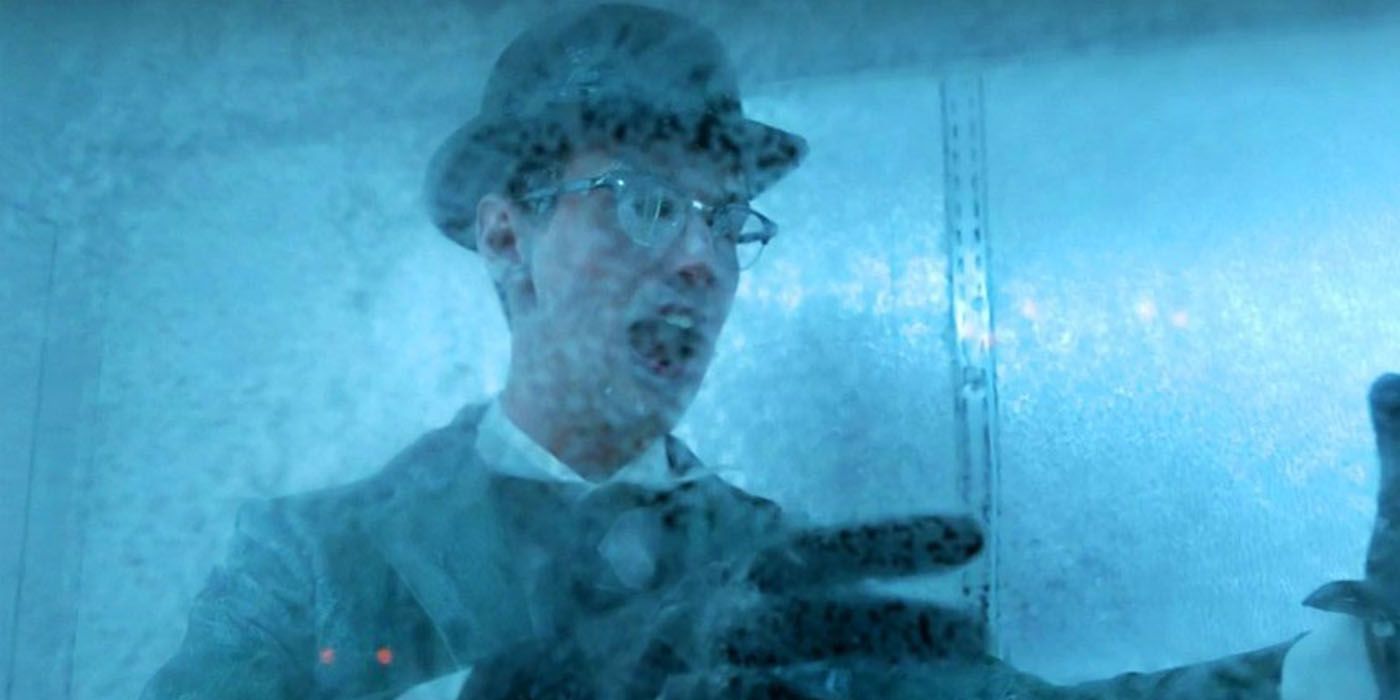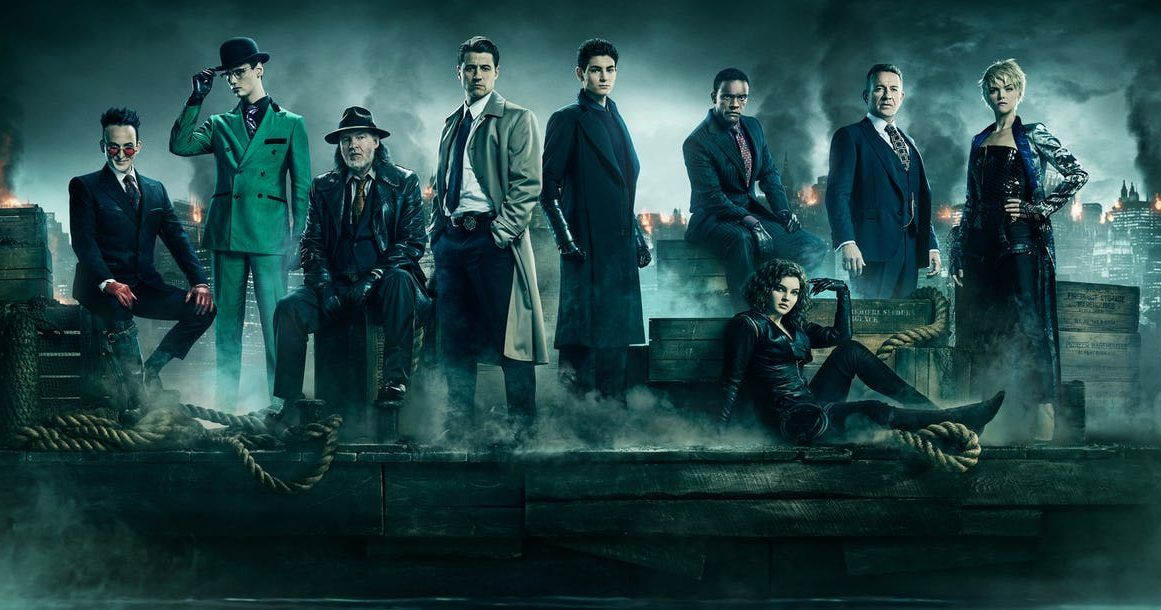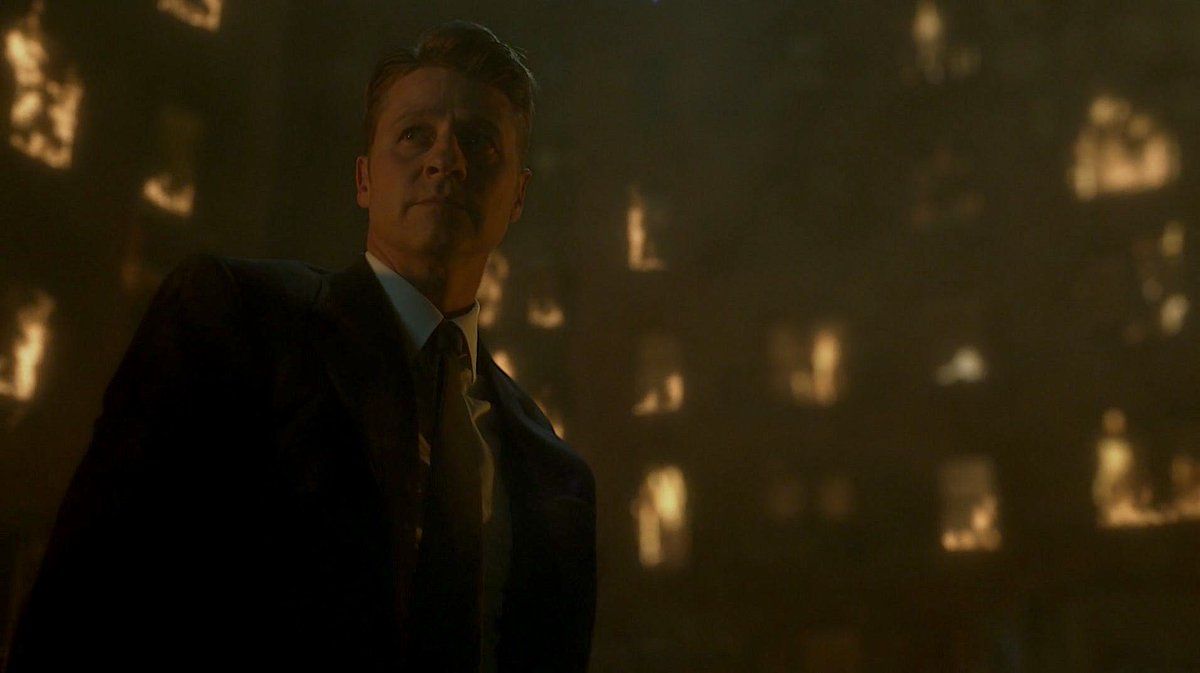Gotham ended up resonating far better with audiences than many anticipated. The show was originally intended to focus on Jim Gordon's rise from rookie detective to GCPD Commissioner, while also providing insight into the gradual evolution of Batman's rogues' gallery and of Bruce Wayne himself. In season one, each episode was essentially a case-of-the-week for Jim Gordon and his partner Harvey Bullock, with subplots for Gotham's criminal underworld and Bruce Wayne happening at the same time.
Though Gordon remained at the forefront, the show ended up switching gears as they adopted more serialized storytelling and placed more emphasis on the rise of villains like the Penguin and Riddler, and most importantly with Bruce's journey toward ultimately becoming Batman. The series seemed to embrace the craziness and eccentricity of its characters and setting more and more, allowing the show to find its identity. Gotham received a devoted fan following, all of which led to a thrilling fifth and final season that recently concluded. With the show's end still fresh in many minds, it's the perfect opportunity to take a look back at the show's run and explore 4 Plot Twists That Hurt Gotham (And 11 That Saved It).
Hurt: Bruce Wayne's Doppelganger
A Bruce Wayne clone created by Hugo Strange had the potential to be a good story, but ultimately failed to deliver. Part of the issue is that while David Mazouz did an excellent job portraying a young Bruce Wayne, the performance wasn't quite there for the clone version.
It also didn't help that the longer hair looked ridiculous and the character didn't even have the full effect that the Court of Owls intended for Bruce and his allies. The reveal of the doppelganger was a huge piece of the second season's cliffhanger, but unfortunately didn't have the payoff that was intended.
Saved: Penguin Working For Carmine Falcone
He began the first season as Fish Mooney's umbrella boy and ended the season as the King of Gotham. The twist that made Penguin's rise to power possible is that he was secretly working for Carmine Falcone, all the while building toward his own master plan to turn all the crime bosses of Gotham against each other.
This reveal clarified Penguin's actions in relation to Jim Gordon, Sal Maroni, Fish Mooney, and many other characters. It also solidified Penguin as one of the most devious and ambitious characters on the show. Penguin became a force to be reckoned with in the criminal underworld, which makes sense considering he learned from the best, and eventually used his knowledge to betray them all and emerge the most powerful.
Saved: Barbara Killed Her Parents
In a first season filled with colorful characters, Barbara Kean seemed like a disappointingly bland character. There didn't appear to be much depth to her and she seemed to solely exist as a love interest for Jim Gordon.
That changed completely in the season one finale where it was revealed that it was Barbara and not the Ogre who killed Barbara's parents. Unveiling Barbara as a largely psychotic and manipulative individual completely changed her trajectory on the show and instantly made her one of the show's most intriguing characters. She only got more fascinating as time went on and she grew more brilliant and powerful, particularly within Gotham's underworld.
Saved: Edward Nygma Saving Penguin's Life
Edward Nygma saving Penguin's life was one of the best things that could've happened for Gotham. Individually they were two of the show's most dynamic characters, yet their storylines in the whole first season and the beginning of the second season had been separate, except for one brief encounter at the GCPD. By saving Penguin's life after nearly being killed by the Galavans, Nygma sparked the most complex and fascinating relationship for the rest of Gotham.
Through love, revenge, dramatic flair, and dastardly plots, from that point forward no two characters were as much fun to watch as the Penguin and the Riddler.
Hurt: Mario Falcone Contracting The Tetch Virus
Season three of Gotham brought the Falcone family back into play as Carmine's son Mario was engaged to Lee Thompkins. As a doctor and someone not involved with his father's "family business," it was difficult to make Mario look like a full-blown villain that would justify Jim Gordon going after him. Instead of trying to develop Mario further, the show fast-tracked his villainy by having Mario come into contact with Alice Tetch's blood.
This made him become infected with the Tetch Virus, which amplified all of Mario's negative traits and made him become a murderous and manipulative character. Jim Gordon killing the infected Mario in order to protect Lee felt forced, and left a sour taste in the audiences' mouth.
Saved: Bruce's "Kidnapping"
Seeing a young Bruce Wayne outsmart Gotham's enemies were some of the show's best moments as they paved to the way to him eventually becoming Batman. One of the best instances of this was in the second season when Tom the Knife and his henchmen captured Bruce and Theo Galavan's niece Silver St. Cloud. He threatened to torture Bruce and Silver for information they knew about the murders of Thomas and Martha Wayne and took Bruce to a back room where it sounded like he was being brutally tortured.
When Tom returned, Silver eventually broke down and revealed that she'd heard her uncle mention the name M. Malone. It was then revealed that with the help of Selina Kyle, Bruce had hired Tom and his henchmen to stage the kidnapping and pretend to torture him in order to get the information from Silver. Not only did fans finally have a clue about the identity of the Waynes' killer after this, but they also got to see Bruce coming into his own as the world's greatest detective.
Saved: Poison Ivy's First Transformation
While iconic Batman characters like Catwoman, Penguin, and the Riddler were having their origins thoroughly developed, the classic villain Poison Ivy was barely receiving any focus. Season three changed that as the brief touch of Marv--one of Hugo Strange's experiments who had the ability to rapidly age anyone he touches--turned Ivy into an adult woman with classic Poison Ivy abilities.
Played by Maggie Geha, this version of Ivy became more central to the story and her origin became better developed. Part of what made the transformation so entertaining was the unique mixture of charm, innocence, and manipulation that Geha brought to the role. It was also fascinating to see her save Penguin's life, form an unlikely bond with him, and for a short time even become his right-hand in the criminal underworld, all of which would've been impossible without the transformation for her character.
Saved: Lee Becoming Queen Of The Narrows
By season four, Lee Thompkins' drama with Jim Gordon had grown tiresome. Her character needed to be put on a new path, and that's exactly what happened when she became Queen of the Narrows. It was refreshing to see Lee thriving in the Narrows, one of the poorer and rougher areas of Gotham.
First she earned their trust and respect through her ceaseless compassion and invaluable medical assistance. Having already won over the people, she became a leader by always standing strong for the Narrows and seeking ways to improve everyone's lives there, while also retaining the identity of the community. Lee interacting with and going toe-to-toe with crime bosses was the perfect change of pace for her character, as were her interactions with Edward Nygma.
Hurt: Poison Ivy's Second Transformation
While Ivy's first transformation was a smart move for the show, the second transformation was not as effective. Potions made the transformation possible this time, and the idea was to make Ivy darker and more cunning than before. Though this version of Ivy was darker, her personality was pretty bland. Beyond more powerful abilities, nothing was brought to the performance that made her uniquely Poison Ivy as opposed to the delightfully quirky, yet dangerous nature of the previous iteration.
This Ivy also didn't have much chemistry with Selina or Bruce, and there was no further exploration of the unexpected relationship and alliance with Penguin. As such, the Ivy storylines in seasons four and five were not as captivating as they could have been.
Saved: Barbara's Resurrection And Succession
Gotham was too liberal with how many dead characters it resurrected, but the resurrection of Barbara Kean was an instance where it actually paid off. Barbara's demise in the season three finale felt too sudden and didn't serve as a satisfying end for her character. Being resurrected by Ra's al Ghul and named his successor not only gave Barbara purpose, but it put her at the center of the show as one of its most powerful and essential characters.
No longer was she relegated to just being a pawn in another villain's scheme or a convenient source of information for other characters. It was the best thing that had happened to her character since the season one finale and cemented her as one of the most integral characters for the rest of the show.
Saved: Jerome's Identical Twin
By season four, Gotham had tried several times to have actors play two different versions of the same character, but never with much success. It finally worked with Cameron Monaghan playing not only Jerome, but now also Jerome's identical twin Jeremiah.
This time it worked because Monaghan was able to be completely believable as both characters and their entirely different personalities, making the scene where Jerome confronts Jeremiah one of the most memorable in the whole series. The twist was also strong from a narrative standpoint as Jeremiah and Bruce Wayne connected in a way Jerome and Bruce never had, which made more sense for why Gotham's Joker would ultimately feel so connected to Batman.
Saved: Jerome's Final Gift To Jeremiah
Even after Jerome perished for a second time, he ensured his legacy would live on forever, this time through his twin brother. Jerome left a gift for Jeremiah, spraying the latter with a special concoction of the laughing venom created by Jerome and the Scarecrow.
This triggered Jeremiah into becoming Gotham's next iteration of the Joker. Certain aspects of Jerome's psychotic, yet playful nature lived on in Jeremiah. Yet, Jeremiah was more methodical in his schemes than Jerome and was more authentically connected to Bruce Wayne than Jerome ever was, making him the perfect Joker for the rest of Gotham's run.
Hurt: A Riddler Super Fan Freeing Him From The Iceberg Lounge
Everyone knew Edward Nygma wouldn't be displayed as the frozen centerpiece of Penguin's Iceberg Lounge for long. That he was freed from the ice by Myrtle Jenkins--an obsessive super fan of his work as the Riddler--was not a satisfying answer to Nygma's predicament.
It felt too random, particularly considering Myrtle Jenkins was a character fans had never met before on the show and she was dispatched by Victor Zsasz shortly after being introduced. There were already enough crazy characters, especially people who would want to hurt Penguin by taking his prize, who would've made more sense when it came to freeing the Riddler.
Saved: No Man's Land
Two of Gotham's most formidable villains--Ra's al Ghul and Jeremiah--joined forces at the end of season four to create No Man's Land. Even though Ra's al Ghul was killed by both Bruce Wayne and Barbara Kean--this time for good--Ra's and Jeremiah succeeded in their plan.
With the city's political leaders killed and all the bridges in Gotham blown apart, the city was cut off from the mainland, isolated and now at the mercy of various criminals. This raised the stakes for Gotham's final season like nothing else could and pushed Bruce to become the Dark Knight Ra's envisioned him to become.
Saved: The Destruction Of Haven
When Jim Gordon and the GCPD created Haven--the one place where the innocent civilians left in Gotham could be safe--it seemed like there was finally a glimmer of hope in No Man's Land. That made it all the more devastating and shocking when Haven was destroyed, taking the lives of many civilians, including the child Gordon had promised to protect. Beyond the emotional toll on the audience, the twist was also effective in terms of who was behind Haven's destruction.
It couldn't be Penguin as he had just helped the people of Haven out of a dire situation and they'd been chanting his name in their gratitude. The stakes were higher than ever as innocent lives were lost, hope was snuffed out, and a mysterious enemy far more dangerous than Penguin threatened Gotham.

